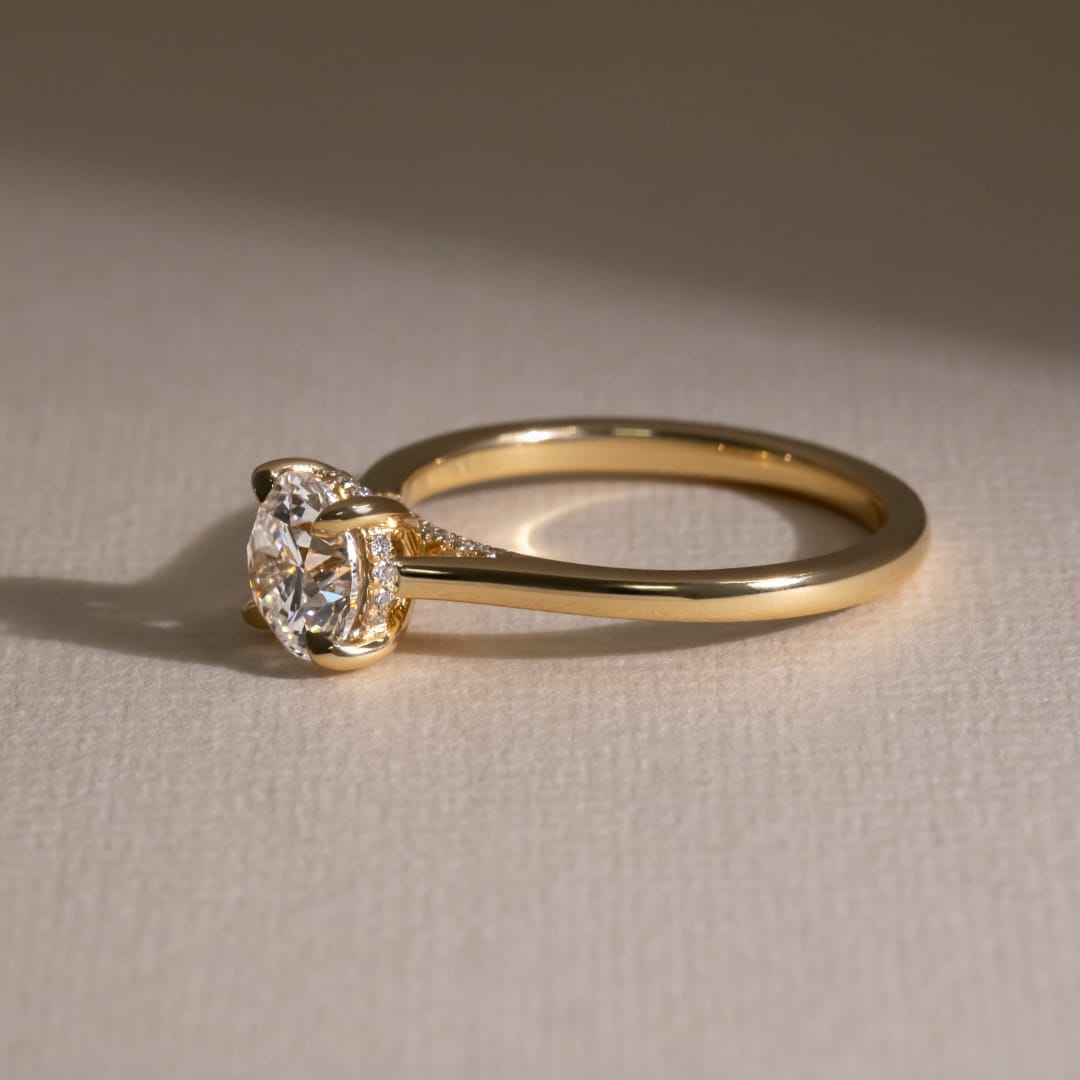
Lab Grown Engagement Rings: The Next Era of Ethical and Sustainable Jewellery
Table of Contents
ToggleLab Grown Engagement Rings: Complete Guide
Every fashion-minded female thinks of superior wedding rings as timeless proof of love and sharing, and the intention to spend a whole life together. Conventionally, these rings have been set by natural diamonds, which are taken from the ground. This trend, however, has slightly changed over the years with people adopting cultured lab-grown engagement rings.
What are Lab Grown Engagement Rings?
Some engagement rings are grown in laboratories and are referred to as laboratory-grown engagement rings. Because the diamonds used in the rings are not mined from the ground, these diamonds are non-detectable by any physical, chemical, or even optical qualities of natural diamonds.
The lab grown engagement rings come in different shapes and cuts, the same as the mined rings that are on the market. With regards to the styles of engagement rings, you can go for the traditional solitaire or for a more antique, halo, or even a contemporary design; since they have lab-grown diamonds, these are accessible.
Environmental Impact: Mined vs. Lab-Grown Diamonds
The other gains that lab-grown engagement rings have over mined diamonds include the environmental effects of mining. In traditional diamond mining, most of the difficulties face environmental problems that may lead to deforestation, soil erosion, and displacement of ecosystems. However, some of these diamond mines are located in extremely strategic geographical locations that are certain to have disastrous effects on the environment.
On the same note, Molsen notes that lab-grown diamonds are produced in a way that is far less destructive to the environment and does not use as many natural resources as mining. Synthetic engagement rings are grown under conditions that do not harm any ecosystem and that do not consume natural resources.
Ethical Considerations: A Conscious Choice for Couples
Apart from buttons and environment, today’s couples are always sensitized to ethical issues of the things they use. There has been great concern about the ethical dilemmas of traditional diamond mining, mainly because it has fostered human rights abuses; worker exploitation, and provided funding for the funding of conflicts now famously referred to as ‘blood diamonds’ or ‘conflict diamonds.’
Though most industries have invested more resources into the enhancement of transparency, the process of mining still occasions ethical dilemmas among consumers.
Lab-grown engagement rings are also a better option since the diamonds are grown in conditions that are free from deceit. Thus, the buyers can be confident that the diamonds in their rings have been created without having to harm or harmlessly kill any of the resources, such as oil or the customary practice of mining that inflicts all sorts of suffering to the subject resources.
The Growing Popularity of Lab-Grown Engagement Rings
Recently, there have been many calls for lab-grown engagement rings. The lab-created diamond market was valued at US$ 2.15 Billion in 2020 and is projected to grow at a CAGR of 22.5% from 2023 to 2030, as said by the global market research firm Grand View Research.
Furthermore, many big brands have adopted the practice because there are now popular jewelers selling collections of engagement rings made of cultured gems. For instance, Brilliant Earth has transitioned to having lab-origin diamonds at its core business offering, and so have De Beers and Pandora.
Why Choose a Lab-Grown Engagement Ring?
With so many factors counting in favor of the lab-grown diamond, it is not experiencing a high demand, and its popularity continues to grow. Here are some of the top benefits of opting for a lab-grown engagement ring:
- Sustainability: Double ten diamonds are made in laboratories with less use of natural resources on the earth hence conserving the earth as compared to mined diamonds.
- Ethical Production: Synthetic engagement rings are grown in an open and sterile atmosphere. With all the physical and social processes involved, I am confident that no human rights injustices are being committed.
- Cost-Effectiveness: Lab-grown diamonds cost way less than mined stones, meaning that the couple can acquire a bigger or better quality diamond ring based on their income.
- Identical to Mined Diamonds: Known as such by using the particular method of cultivation, these stones are the same as natural ones in terms of their chemical and physical properties, sparkle, density, and aesthetic values.
Conclusion: Lab Grown Engagement Rings
Lab-grown engagement rings are the greatest invention of the century in the jewelry industry because they bring sustainable, ethically sourced, and affordable gemstone rings to the market, together with the natural finesse of diamonds. By choosing lab-grown diamonds, more couples are making a decision to be responsible while being loving toward themselves and the planet.
FAQs: Lab Grown Engagement Rings
Below are some FAQs about Lab Grown Engagement Rings.
Is a lab-grown diamond ok as an engagement ring?
Lab-grown diamonds are certainly permitted for engagement rings. They are genuine diamonds with identical chemical and physical characteristics to those of actual diamonds.
Is it OK to propose with a lab-grown diamond?
Yes, it is permissible and a great idea to pop the question with a ring that features a lab-grown diamond. My experience with Mikado Diamonds, where I just bought an engagement ring, was excellent. Beautiful lab-grown diamond rings are available in a large assortment at Mikado Diamonds.
Are laboratory diamonds worth anything?
Natural or lab-created, a diamond is a big investment, but a lab-created diamond will provide you more for your money. Although the cost of a synthetic diamond is often in the thousands, it is likely to be 60% to 85% less expensive than a genuine diamond of the same size and grade.
What is the downside of lab-grown diamonds?
Chemically, lab-created diamonds are identical to naturally occurring diamonds that are mined. Although they are less expensive, they probably won’t be worth as much in the long run. Additionally, they will never be as rare, one-of-a-kind, or meaningful as a naturally occurring stone that developed deep inside the earth over billions of years.
Is a lab diamond a fake diamond?
Indeed, lab-grown diamonds are identical to actual diamonds in every way, including their characteristics. Without specialized laboratory equipment, it is hard to distinguish lab-created diamonds from natural diamonds due to their lack of physical variations.
You May Also Like

Casual Winter Wear Essentials Clothing You Must Have In Your Wardrobe
1 January 2025
The Ultimate Guide to Ladies Bags
26 November 2024

